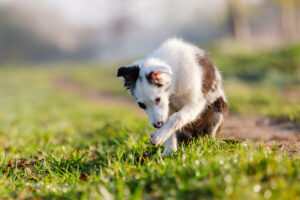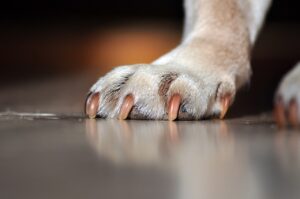A dog that confidently engages with new dogs, welcomes visitors, and is at ease in all sorts of environments is not just a delight to be around but is also safer and happier. Socializing your dog is an essential process that helps them adapt to their surroundings healthily and happily. It can influence everything from their emotional development to their overall temperament. But it’s also a term that’s heavily tossed around, so what does dog socialization really mean?
In this comprehensive guide, we’ll walk you through everything you need to know about socializing your dog, from the early puppy days to rescues and older canines. We’ll also cover the dos and don’ts, common pitfalls, and how to cater to dogs with special needs. This guide is tailored for all dog owners, aspiring pet parents, and even seasoned animal behaviorists looking for a fresh perspective.
Can It Be Too Late to Socialize a Dog?
You may have heard the adage ‘you can’t teach an old dog new tricks’, but in the world of socialization, it’s never too late. While the optimum window for socializing a dog is between 3 and 14 weeks old, adult dogs and even elderly canines can benefit from social interactions and adapt their behaviors. The process might be slower and require patience, but with the right approach, any dog can build its social skills.
How to Improve Your Dog’s Socialization
Improving your dog’s socialization demands consistency and gentle persistence. First, understand that every dog is unique and may require different methods. However, there are some universally applicable strategies:
- Positive Exposure: Expose your dog regularly to different experiences and environments in a positive way. Pair the new experiences with treats and praise to create positive associations.
- Structured Social Scenarios: Controlled playdates set up with dogs known to have calm temperaments can help your dog learn to interact appropriately.
- Canine Training Classes: Obedience courses that include controlled interactions with other dogs can be incredibly beneficial.
- Exposure to Different People: Introduce your dog to a variety of people, including different genders, ages, and ethnicities. Encourage gentle play and petting.
- Desensitization Training: If your dog is fearful of specific stimuli, such as loud noises, use desensitization techniques to gradually build their tolerance to the fear-inducing factor.
How Long Does It Take to Socialize a Dog?
The duration of dog socialization can vary widely based on the dog’s breed, history, and individual temperament. For some dogs, a mere few weeks of consistent social exposure can dramatically improve their interactions. For others, particularly those with traumatic pasts, it may take months of carefully managed socialization to see significant changes. Patience and an adaptable approach are keys to successful socialization.
How Do You Socialize an Unsocialized Dog?
Socializing an unsocialized dog requires a bit of extra TLC. If your dog hasn’t been properly socialized from a young age, the following steps are vital:
- Start Small: Begin with calm and quiet environments, then slowly build up to busier places.
- Reward-Based Training: Always have high-value treats or toys on hand to reward good behavior when your dog engages in social activities.
- Monitor Body Language: Learn to read your dog’s body language. Take breaks if your dog is showing signs of stress and monitor their comfort levels throughout social interactions.
- Consistency is Key: Regular and consistent exposure to social experiences is essential.
Signs of a Poorly Socialized Dog
A poorly socialized dog may exhibit a wide range of behaviors, from simple shyness to outright aggression. Some of the most common signs include:
- Fear or anxiety around new people or animals.
- Aggression towards unfamiliar people or dogs.
- Over-excitability that’s difficult to control.
- Anxiety in new environments or situations.
- Withdrawal and hiding behavior in social scenarios.
How to Socialize Your Dog With Humans
Socializing your dog with humans should be a positive and engaging experience. Here are some tips:
- Meet and Greet: Enlist the help of friends and family to provide a diverse range of human interactions.
- Children Interactions: Ensure your dog is introduced to children at an early age to make them comfortable around kids.
- Limit Stress: Minimize socialization experiences that could be overwhelming. Gradually increase the intensity as your dog becomes more comfortable.
How to Socialize a Dog With Anxiety
If your dog is anxious, socialization can be tricky. Here’s how to approach it:
- Seek Professional Help: A professional dog trainer or behaviorist can guide you through a tailored approach.
- Create Safe Spaces: Give your dog a safe area to retreat when they feel overwhelmed during socialization.
- Exercise Patience: Never rush the process. Slow and steady wins the race with anxious dogs.
- Use Calming Techniques: Techniques such as massage, gentle stroking, and calming music can help relax an anxious dog during social experiences.
How to Socialize an Older Dog With Humans
Socializing an older dog with humans can be very similar to socializing a younger one. However, subtle differences include:
- Slower Introductions: Introduce new people and scenarios at a pace that is comfortable for your dog.
- Consistent Interaction: Regular, though not necessarily lengthy, interactions with people from all walks of life can help build a more robust social comfort level.
- Exposure to Various Environments: Take older dogs to a wide variety of places to expose them to different environmental factors that may not have been part of their earlier experiences.
How to Socialize a 2-Year-Old Dog
At 2 years old, socializing a dog becomes more about reinforcing positive social behaviors.
- Regular Exposure: Make sure your dog has daily exposure to different environments, people, and animals.
- Positive Reinforcement: Use verbal praise and their favorite treats as a reward for good social behavior.
- Structured Play: Organize regular playdates with well-socialized dogs for controlled social interaction.
How to Socialize a Rescue Dog With Humans
Rescue dogs often come with unknown histories and may be more challenging to socialize. Here’s what you can do:
- Be Patient: Give your rescue dog time to adjust. Don’t push them into social scenarios too soon.
- Slow Introduction: Gradually introduce your dog to new people, starting with quiet, comforting individuals they can form positive associations with.
- Home Comfort: Allow your dog to set the pace. Don’t force them into interactions they’re not ready for.
How to Socialize a Reactive Dog
Reactivity is often a symptom of poor socialization or negative past experiences. To improve reactivity:
- Professional Training: Work with a trainer experienced in reactive dog behavior.
- Counter-Conditioning: Pair the sight or presence of the trigger with something positive, like treats or play, to change the dog’s emotional response.
- Slow Exposure: Increase your dog’s exposure to triggers gradually, ensuring they always feel safe and secure.
- Avoid Overwhelming Situations: When overwhelmed, a reactive dog may regress. Keep interactions controlled and positive.
Key Takeaways
- Early socialization for puppies is pivotal, but dogs of all ages can benefit from proper socialization techniques.
- Tailor the socialization process to suit your dog’s individual needs, strengths, and challenges.
- Be patient, be consistent, and always utilize positive reinforcement to foster good social behaviors.
- While the process can be challenging, the reward of a well-socialized and happy dog is immeasurable.
In the end, socializing a dog is a deeply personal and rewarding experience, and the bond formed through the process is often as valuable as the social skills it fosters.







